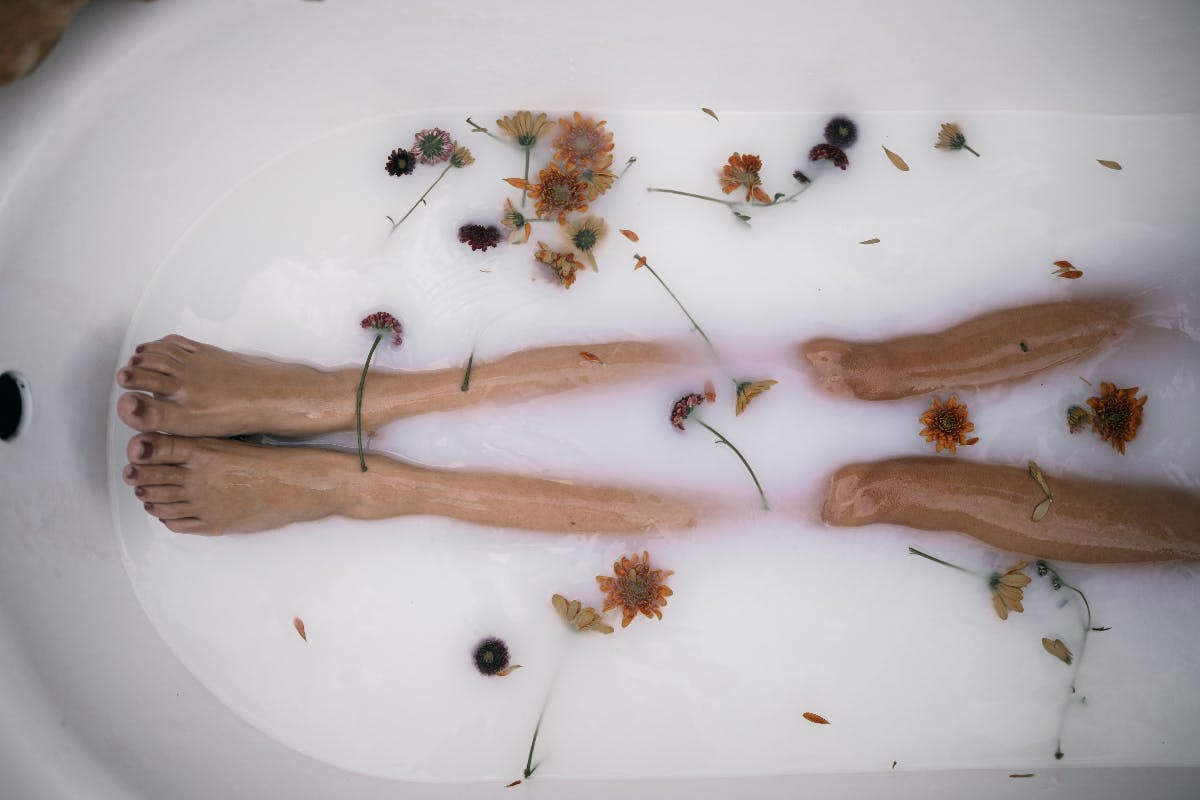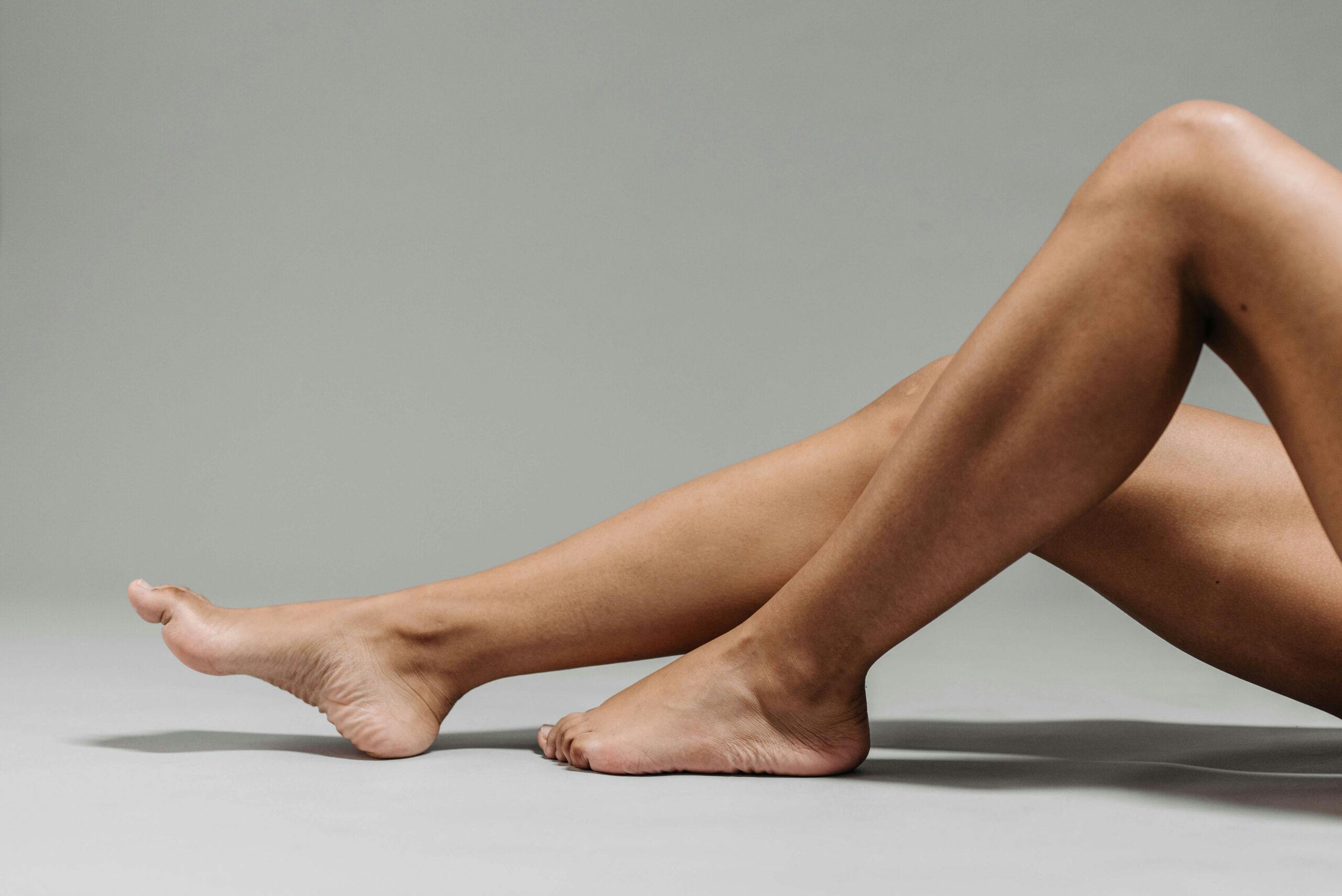How to get rid of strawberry legs
Nov 25, 2021

If you struggle with the skin condition known as strawberry legs, you’re not alone. It’s an extremely common condition, but that doesn’t make it less annoying! In this post, we explain everything you need to know about strawberry legs, including what causes it and how to treat it.
What are strawberry legs?
The term ‘strawberry legs' refers to when legs are dotted with small dark spots that look rather like the seeds on the outside of a strawberry. This is because the hair follicles have darkened due to the fact that they have become blocked with excess oils, dead skin cells, bacteria, or a combination of all three. The darkening of the follicles is a result of oxidisation. This is when the oil inside the follicle meets the air and causes it to deepen in tone. It’s a little like the tarnishing that can affect jewellery. Strawberry legs can be caused by a number of skin conditions. Here is a brief rundown of the potential culprits of strawberry legs, so you can understand why the skin follicles on your legs resemble dark flecks.
Strawberry legs and acne
Acne can be one of the causes of strawberry legs, and many people under the age of 30 will experience one or more acne outbreaks during their lives. A breakout occurs when the follicles go into over-production mode, producing more sebum than is required. Blocked follicles are the result, hence the connection between acne and strawberry legs.
Strawberry legs and folliculitis
The darkening of the hair follicles is often one of the first signs of folliculitis. This condition is due to the inflammation, irritation or even the infection of the hair follicles.There are several types of folliculitis, and they can also cause the skin to redden or swell. Other symptoms can include pus-filled bumps and itching. All are caused by bacterial, fungal or yeast infection of the hair follicles on the legs.
Strawberry legs and ingrown hairs
Shaving your legs can also be a cause of strawberry legs. Razor bumps or grazing can occur, particularly in people who have thicker, curlier and darker hair. Other symptoms of ingrown hairs may include areas of darker pigmentation, pain or itching and papules (little darkened bumps) or pustules (pus-filled lumps resembling small blisters). Ingrown hairs may also be visible beneath the skin’s surface.
How to get rid of Strawberry Legs
Whatever the reason behind the darkened hair follicles that cause strawberry legs, it’s understandably frustrating. However in many cases, something can be done to help ease the appearance of the condition. The treatment for strawberry legs focuses on addressing the cause, rather than treating the symptoms.
Acne
If your strawberry legs have been caused by acne, this can be treated in the usual way. There are formulas available to buy over the counter, or specialist creams may be prescribed by a doctor. Other simple steps to tackle acne include avoiding skincare formulas that may clog the pores - look for ‘non-comedogenic’ on the label. Wearing looser, more breathable clothing on the legs may also help, as can avoiding high humidity environments and excessive sweating.
Folliculitis
An antibacterial cleanser can be used on the legs to combat bacteria, fungus or yeast infections. Often strawberry legs and other symptoms of folliculitis will improve after just a few days.If this is not the case, then infection may be present. At this point it’s best to seek medical advice, because an antibiotic may be required to clear things up.
Ingrown hairs
Shaving can be a major cause of ingrown hairs, which in turn can lead to strawberry legs. One possible option is to bypass shaving altogether and book a professional leg wax instead. You’ll be in skilled hands, and the likelihood of developing darkened follicles due to hair removal is reduced.If you do decide to shave, taking more time and care can help. Shave your legs when the skin is warm, such as after some time in the shower or bath. Applying a shaving gel can also help the razor to glide more smoothly over the skin, and make sure you change your razor or its blades often. You should also exfoliate more often to deep clean the skin, sweeping away the dead cell that can block follicles. Shaving less often to reduce irritation is also a good idea, which is why waxing may be a preferable option.After shaving, applying a skin-soothing formula to help nourish and calm the skin is beneficial. This is also important because dry skin is more likely to exacerbate strawberry legs.
How to stop strawberry legs in future
As with most beauty matters, prevention is better than cure. There are some simple steps you can take to reduce the risk of developing strawberry legs in future.
Cleanse
Regular use of a good antibacterial cleanser can help to prevent strawberry legs, as it gets rid of bacteria before the pores can become clogged.
Exfoliate
Using a good exfoliant regularly can also ensure dead skin cells are swept away from the surface of the skin before they can cause the follicles to block up.
Moisturise
Using a good body moisturiser on the legs is a good idea, as it helps to combat the dryness that can make strawberry legs look worse.
Hair removal
If possible, shaving is best avoided, as it leaves the follicles exposed and therefore open to clogging or even infection. Professional waxing is a good alternative to shaving the legs. It’s more gentle, and as it is required less often the skin will become less irritated or inflamed.
Specialist skincare
Products containing skincare ingredients such as salicylic or glycolic acid may also help. This is because they can help to combat the acne or dry skin that can lead to strawberry legs.
If you require a recommendation, just ask your beauty therapist for advice.Booking a professional leg wax is one of the simplest ways to help prevent strawberry legs. Secret Spa therapists can carry out all kinds of waxing in the comfort of your own home, so why not take a look at the competitive packages we offer today?






